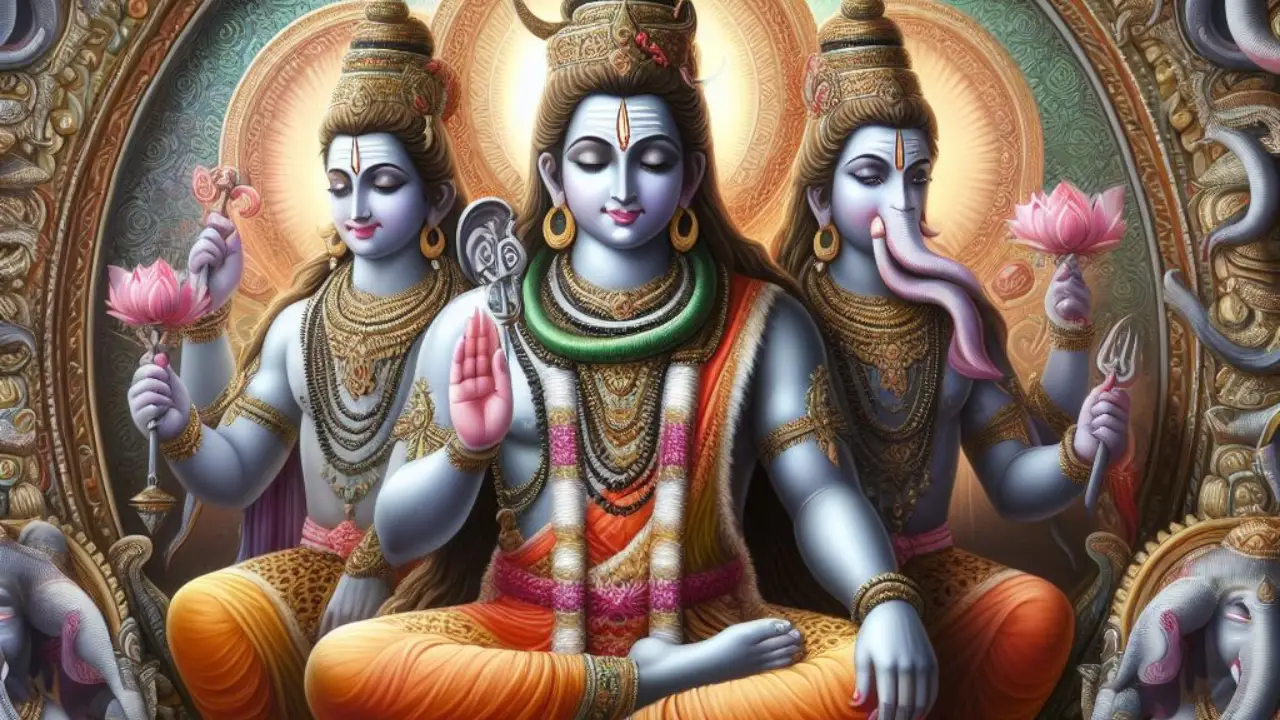In the vast pantheon of Hindu deities, Lord Shiva holds a unique place as the destroyer and transformer. He is also known for his role as a loving father to two remarkable sons, Ganesha and Kartikeya. These divine siblings are celebrated figures in Hindu mythology, and their stories offer profound insights into the rich tapestry of Hindu culture. Let’s delve into the captivating narratives and symbolism surrounding Lord Shiva’s two sons.
Ganesha: The Elephant-Headed God
The Birth of Ganesha
Ganesha, also known as Ganapati and Vinayaka, is perhaps one of the most recognizable deities in Hinduism, thanks to his distinctive elephant head. The story of Ganesha’s birth is both heartwarming and enlightening.
Once, while Lord Shiva was away from their abode on Mount Kailash, his consort Parvati decided to create a guardian to stand watch. She molded a figure from the clay of her own body and breathed life into it. When Parvati finished sculpting, she asked the newly formed boy to guard the entrance and not allow anyone in while she bathed.
Soon after, Lord Shiva returned home, but the boy, unaware of his divine lineage, stopped him from entering. Enraged by the young boy’s audacity, Lord Shiva’s trident came down, severing the boy’s head. Parvati was devastated when she saw what had happened.
The Symbolism of Ganesha’s Elephant Head
To console Parvati, Lord Shiva promised to bring their son back to life. He instructed his followers to find the head of the first living being they encountered, which turned out to be an elephant. Lord Shiva then attached the elephant’s head to the boy’s body, bringing Ganesha back to life.
Ganesha’s elephant head symbolizes wisdom, intelligence, and the ability to overcome obstacles. His large ears represent the importance of listening, while his small mouth signifies the need to speak less and choose words wisely. His broken tusk is a symbol of sacrifice for a greater purpose.
The Significance of Ganesha
Ganesha is revered as the Remover of Obstacles and the Lord of Beginnings. Hindus often invoke his blessings before embarking on any new endeavor. His love for sweets, particularly modak, is legendary, making these treats an essential offering during his worship.
READ ALSO:
Embracing Lord Shiva: Hinduism’s Core
Lord Kartikeya: God of War & Triumph
Birth Of Lord Ganesha: A Mythical Journey
Kartikeya: The Warrior God
The Birth of Kartikeya
Kartikeya, also known as Murugan, Skanda, and Subramanya, is the elder son of Lord Shiva and Parvati. His birth story is no less intriguing than that of Ganesha.
Once, the world was threatened by the demon Tarakasura, who had received a boon that only Shiva’s son could defeat him. To fulfill this destiny, Kartikeya was born. He emerged as a radiant six-faced baby, symbolizing the six facets of human intelligence.
Kartikeya: The Warrior and Leader
Kartikeya is often depicted riding a peacock and wielding a spear or vel. This imagery signifies his prowess as a warrior. He led the celestial armies into battle against Tarakasura and emerged victorious, fulfilling his destined role.
Kartikeya embodies qualities like valor, leadership, and righteousness. He is particularly revered in South India, where temples dedicated to him are abundant. His festivals, like Thaipusam, draw millions of devotees who participate in grand processions and penance rituals.
Lord Shiva’s two sons – Ganesha and Kartikeya: The Divine Siblings
The Family Dynamics
While Ganesha and Kartikeya are both sons of Lord Shiva and Parvati, their personalities and stories differ significantly. Ganesha is often seen as the epitome of wisdom and intellect, while Kartikeya represents valor and leadership. These distinctions reflect the diversity of qualities and values within the Hindu pantheon.
The Unity in Diversity of Lord Shiva’s Two Sons
Despite their differences, Ganesha and Kartikeya share a deep bond as siblings. Their unity symbolizes the harmonious coexistence of diverse traits and qualities. This unity is a fundamental concept in Hinduism, emphasizing that different attributes and skills can complement each other.
Worship and Devotion of Lord Shiva’s Two Sons
Hindu devotees often worship Ganesha and Kartikeya together, seeking their blessings for a balanced and successful life. Ganesha is invoked at the beginning of endeavors to remove obstacles, while Kartikeya is revered for strength and courage during challenges.
In conclusion, Ganesha and Kartikeya, Lord Shiva’s two sons, embody distinct qualities and play unique roles in Hindu mythology and culture. Ganesha, with his elephant head, symbolizes wisdom and the removal of obstacles, while Kartikeya, the valiant warrior, represents leadership and righteousness. Together, they exemplify the rich tapestry of Hindu beliefs, emphasizing the unity in diversity and the importance of balancing various qualities and values in one’s life. Their stories and significance continue to inspire millions of devotees around the world, making them cherished figures in Hinduism.

